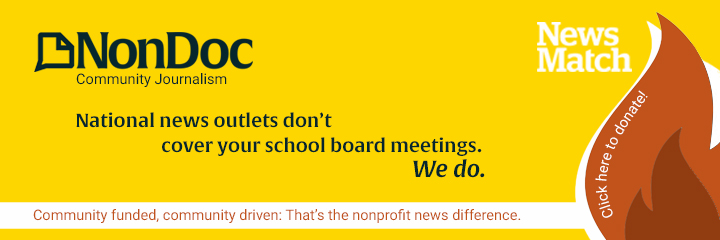
KANSAS CITY, Missouri — Here’s the thing about swastikas: They’re easy to draw. The simplest of minds can hammer one out in a matter of seconds. The other thing about swastikas is that, for those of us who are knowledgeable when it comes to general world history, they strike a queasy feeling in the gut. They had no place in early 20th-century Europe as an appropriated Hindu symbol, and they certainly have no place in 2017. Seeing them in use today shocks the system.
It’s more than just a couple of oddly arranged lines. It’s more than just an armband or a flag or however someone chooses to present it. It’s a message to all nonwhites that they are not welcome. That they will be systematically killed.
If we were a country like Germany that feels actual shame for the Holocaust and the suffering that came before and after it, this wouldn’t be a problem. If we took the time to sit down and read up on the stories of people who lived through times of rampant supremacy and its violent end product, this wouldn’t be a problem. If people in America weren’t so insistent on spreading hate instead of learning, this wouldn’t be a problem. But here we are.
What people in America forget is that we were within the first group that decided to ban this symbol. In 1945, Allied Forces who had recently defeated the Nazis banned the swastika. In 1949, German law affirmed this ban. Across Germany, the red, white and black flags bearing the symbol of the Third Reich were torn down. Not as an act of erasure but of shame and remorse.
Swastikas popping up in unlikely places
Somehow, swastikas are still popping up in America, even among my teenage peers in Kansas City.
Scrolling through Snapchat on my phone this summer, I saw a classmate had edited the symbol onto her selfie. A little horrified, I privately messaged her to take it down, please. I was met with the flippant response, “It’s just a joke. Calm down.”
People who know me know I don’t calm down about issues like this very easily, so I insisted.
“Who cares?” my classmate asked. Exasperated, I reminded her of its history and assured her that many people did, in fact, care. After about a half hour of back and forth, I got my way, and she took the swastika-adorned selfie down (and then promptly blocked me on Snapchat). This, sadly, was not the last time I would have to message a peer to take the symbol off of their social media.
Charlottesville exemplifies modern resurgence
So why is it “in” again? How is it that, in the 21st century, swastikas became the symbol of choice for the marchers in Charlottesville, and anyone else who wishes to make a statement about the current state of our country and the attempts at inclusivity at which they are so disgusted?
It might be naive, but sometimes I hope it’s out of sheer ignorance. These people simply don’t know the weight this symbol carries. If someone simply explained it to them and gave them time to reflect, their minds would change.
I’m scared because I know that when some people make swastikas, they know exactly what they’re doing and the message they’re sending. This was the case in Charlottesville, and it could potentially be the case every time people casually draw one or post about them online.
‘This is wrong’
To fix this issue, we need good, educated people that are able to look at symbols like the swastika, the confederate flag or any other symbol of hatred and say, “No. This is wrong.”
We need people who refuse to revert back to the flawed ways of the past, people who are willing to create a better future. Not people who let it slide as a joke, or assume the person doesn’t know any better or, worst of all, agree with it’s use. Those of us who are willing to encourage positive change are people ready for a beautiful future of equality. The rest are still living in the 1940s.






















